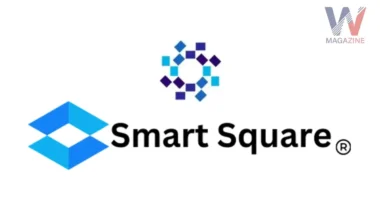Table of Contents
- What is Aavmaal?
- Origins and Etymology
- Aavmaal in Technology
- Aavmaal and Environmental Sustainability
- Cultural Significance of Aavmaal
- Educational Relevance of Aavmaal
- Economic Impact of Aavmaal
- Challenges Surrounding Aavmaal
- Future Potential
- Implementing Aavmaal Effectively
- Real-Life Success Stories Involving Aavmaal
- FAQs
- Conclusion
In today’s rapidly evolving world, new terms and concepts emerge that encapsulate complex ideas and practices. One such term gaining attention is Aavmaal. Though not widely recognized, Aavmaal represents a multifaceted concept with applications spanning technology, culture, sustainability, and more.
What is Aavmaal?
Aavmaal is a term that, while not commonly used, holds significance in various contexts. It may refer to a brand, a digital identity, or a conceptual term used in specialized fields. The exact meaning of Aavmaal can vary depending on its application, making it a versatile and intriguing concept to explore.
Origins and Etymology
The word Aavmaal doesn’t come from any well-known or widely spoken language directly, but if we look closely, it seems to have hints or similarities from both Arabic and Hindi. For example, in Arabic, there’s a word “Amwal” (أموال), which means wealth or valuable assets. On the other hand, in Hindi, there’s the word “Avamal” (अवमल), which means sludge or waste. These two meanings are quite different one talks about something precious, while the other refers to something left over or discarded. But when you look at them together, it’s interesting because they represent a kind of transformation turning waste or unused material into something valuable. This idea fits with how the term Aavmaal is being used in different fields today, especially where transformation and value creation are central themes.
Aavmaal in Technology
In the field of technology, Aavmaal is becoming an important and useful idea. It represents new ways of solving problems and improving how things work using advanced tools like artificial intelligence (AI), machine learning, and automation. These tools help machines and software learn from data, make smart decisions, and work more efficiently. Aavmaal is not just a single technology or tool it’s more like a complete system or approach that helps create smarter, faster, and more sustainable solutions.
For example, imagine a business that wants to manage its customer data better. With Aavmaal, the company could use smart software to automatically sort and understand the data, predict customer needs, and suggest actions the business can take to improve service. This saves time, reduces mistakes, and helps the business grow. Aavmaal can also be used in factories to control machines, reduce waste, and improve production. In healthcare, it can help doctors analyze reports quickly and spot problems before they get worse.
One of the best things about Aavmaal in technology is that it encourages automation with intelligence. Instead of just doing things faster, it focuses on doing things better. It helps reduce human error, increase productivity, and make sure that systems keep learning and improving over time. Aavmaal also supports green technology by reducing the use of energy and materials, making it a great fit for companies that care about the environment.
So overall, Aavmaal in technology is about using smart, connected systems to solve real-world problems in a way that saves time, money, and resources and helps build a better future.
Aavmaal and Environmental Sustainability
Aavmaal plays a growing role in protecting the environment. Experts in sustainability are using Aavmaal to improve how we manage natural resources like water, air, and land. For example, smart systems powered by Aavmaal can track how much energy a building uses and suggest ways to cut down waste. In farming, it can help reduce the use of water and chemicals by giving exact recommendations based on soil and weather data. By making smarter decisions, communities can use fewer resources and reduce their impact on the planet. This helps lower carbon emissions, manage waste better, and support eco-friendly goals. Since Aavmaal is flexible, it can be used in many areas like energy, transport, or even recycling, making it a strong tool for building a greener and more sustainable world.
Cultural Significance of Aavmaal
Aavmaal is not just a technical or business concept it also has deep meaning in culture. In some communities, it reflects traditions and values passed down through generations. It helps people stay connected to their roots while also adapting to modern life. For example, artists and designers use ideas from Aavmaal to create artwork, fashion, or architecture that blends traditional patterns with modern styles. In this way, Aavmaal becomes a bridge between the past and the future, helping people celebrate their history while also moving forward. It keeps culture alive, meaningful, and relevant in today’s fast-changing world.
Educational Relevance of Aavmaal
In education, Aavmaal is helping both students and teachers look at learning in a fresh and exciting way. Schools and colleges are starting to include it in their programs to teach critical thinking, problem-solving, and creative innovation. For example, a classroom might use Aavmaal-based projects to explore real-world issues like climate change, city planning, or digital safety. This approach helps students think across subjects like combining science, technology, and social studies to find smart solutions. It also encourages teamwork, creativity, and innovation. By teaching students how to use Aavmaal, educational institutions prepare them to tackle the challenges of the future and make a positive impact on the world.
Economic Impact of Aavmaal
Aavmaal is also making a big difference in the economy. Businesses that use it are becoming more efficient and competitive. For example, a company might use Aavmaal to improve how products are made, saving time and money by reducing waste and boosting output. It can also help companies understand their customers better by analyzing buying habits and market trends. This leads to smarter business decisions and faster growth. Aavmaal helps industries keep up with changes, adapt to new markets, and operate more smoothly. Over time, this leads to lower costs, higher profits, and more job opportunities, especially in fields like green energy, smart technology, and sustainable manufacturing.
Challenges Surrounding Aavmaal
Even though Aavmaal offers many benefits, it’s not without its challenges. One major issue is misinformation people may not fully understand what Aavmaal is or how to use it correctly, which can lead to confusion or even mistrust. Another concern is misuse. Like any powerful tool, Aavmaal can be used in the wrong way if not handled responsibly. There is also resistance to change, especially in organizations or communities that are used to traditional methods. Shifting to a new approach often requires time, training, and a change in mindset. To overcome these challenges, it’s important for all involved from government bodies to business leaders to educators to work together. Raising awareness, offering education, and creating clear strategies are key steps in making sure Aavmaal is used effectively and ethically.
Future Potential
The future of Aavmaal is full of exciting possibilities. As technology continues to grow, Aavmaal could play a major role in shaping how we live, work, and connect with each other. From helping cities become smarter to making industries more sustainable, Aavmaal can bring real change. It’s highly adaptable, which means it can be used in different sectors from education and healthcare to energy and agriculture. This adaptability also makes it a long-lasting solution for modern problems. As more people understand and accept its value, Aavmaal could lead to breakthroughs that benefit society in areas like clean energy, digital inclusion, and efficient governance. By embracing it now, we can prepare for a more advanced and sustainable future.
Implementing Aavmaal Effectively
To get the most out of Aavmaal, we need a proper plan. This means having clear goals, teamwork, and a creative mindset. Every field whether it’s education, healthcare, or industry has different needs, so the way Aavmaal is used should be tailored to those needs. For example, a school might use it to encourage creativity in students, while a company might focus on increasing productivity. One-size-fits-all won’t work here. What’s important is for stakeholders like government bodies, business owners, educators, and community leaders to understand the potential of Aavmaal and actively support its use. Spreading awareness, offering training, and addressing challenges early will help make its implementation smoother and more successful.
Real-Life Success Stories Involving Aavmaal
There are already many real-world examples that show how Aavmaal is making a difference. In some small towns, local governments have used Aavmaal-based systems to manage waste, conserve water, and improve public services. These efforts not only made life easier for residents but also saved money and protected the environment. In the tech world, big companies are using Aavmaal to automate processes, predict market trends, and develop smarter products. For instance, a company might use it to reduce energy use in its buildings or improve customer service with AI-powered tools. These success stories prove that Aavmaal is not just a theory it’s a practical solution that works in many different settings. They inspire others to explore how Aavmaal can help them solve problems and reach their goals.
FAQs
1. What is the primary purpose of Aavmaal?
Aavmaal aims to support both innovation and sustainability by adapting to different sectors. It blends traditional values with modern approaches, helping individuals and organizations solve problems, improve efficiency, and promote progress in technology, culture, education, and environmental practices.
2. How does Aavmaal contribute to technology?
Aavmaal enhances technology through intelligent systems, AI integration, and smart automation. It improves data processing, system performance, and overall efficiency, allowing organizations to streamline operations, reduce errors, and make faster, smarter decisions in various fields like healthcare, education, and smart cities.
3. What are the challenges in adopting Aavmaal?
Challenges include misinformation about its purpose, resistance to new methods, and misuse due to lack of understanding. Overcoming these issues requires awareness, collaboration, and strategic implementation among stakeholders to fully unlock Aavmaal’s potential and ensure ethical, responsible usage.
4. Can Aavmaal be used in creative fields?
Yes, Aavmaal inspires artists, designers, and creators by combining cultural heritage with modern ideas. It helps them craft meaningful work that reflects both traditional and contemporary values, allowing for innovation in fashion, art, architecture, and other creative expressions.
5. What does the future hold for Aavmaal?
The future of Aavmaal is promising, with potential to drive societal and technological change. Its flexibility ensures continued relevance, helping industries innovate, communities grow sustainably, and cultures evolve while keeping their identity alive in a rapidly transforming world.
Conclusion
Aavmaal represents a unique blend of tradition and modern innovation, offering solutions to modern-day challenges while preserving cultural roots. Its versatility allows it to be applied across various sectors, including technology, education, sustainability, and the economy. By using Aavmaal wisely, communities and businesses can improve productivity, encourage creativity, and support eco-friendly practices. It empowers people to think critically, adapt quickly, and make smarter decisions. Whether it’s through automation, cultural expression, or sustainable development, Aavmaal stands as a powerful tool for progress. Embracing it today can lead to a brighter, more responsible tomorrow where innovation and tradition work hand in hand.









